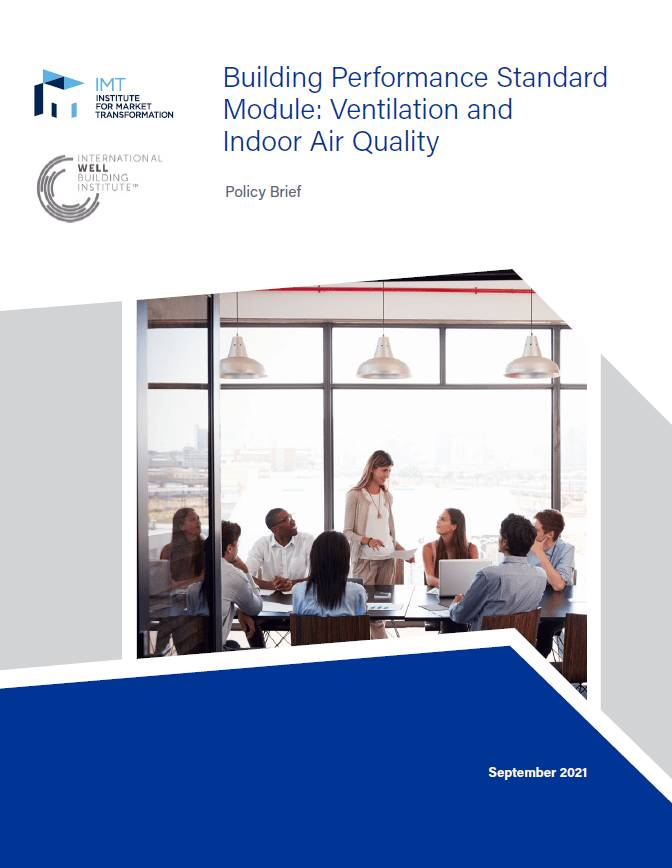At IMT, we believe that building performance standards (BPS) can and should serve as platforms to regulate the intersecting issues at play in our built environment, including health, housing affordability, resilience, and economic inclusion. However to date, most building performance policies have focused only on energy and carbon, without addressing these other important, complimentary issues. We believe BPS provide jurisdictions with the opportunity to move towards more holistic policy design. So, we have kicked off the Social Priorities Project in order to come up with creative, impactful policy toolkits that allow jurisdictions to add dimensions to BPS in order to more comprehensively address the layered social and environmental factors at play in the built environment.
We are excited to release the first of these toolkits today. The Building Performance Standard Module: Ventilation and Indoor Air Quality aims to guide policy-makers through how to include parameters around ventilation and indoor air quality (IAQ) as part of IMT’s Model BPS Ordinance. In parallel, we have also added policy language to the model ordinance in order to give policy-makers specific language for how to legislate this approach. The goal of these documents is to provide an actionable path for jurisdictions to create awareness around ventilation system performance and IAQ buildings within their borders, phase in rigorous testing requirements, and send a long-term market signal that ventilation and IAQ are key markers of building performance, right alongside energy use.
Targeting building energy use is critical—particularly in response to this summer’s extreme weather and the latest IPCC report on the need for urgent climate action—but the Covid-19 pandemic has underscored the importance of protecting our indoor health indoors. As stay-at-home orders have been lifted, many of us are now facing complex decisions over when and how often to go back to our workplaces. We are making risk calculations around many of the indoor activities we used to take for granted, including going out to restaurants and even sending our children to school. Both more information and increased transparency of data around buildings’ ventilation and indoor air quality are needed to help policy-makers and residents make informed decisions about the safety of our indoor spaces. We hope that addressing, in one law, the overlapping elements of energy efficiency and ventilation system performance will allow owners to make key investment decisions in tandem, minimizing the potential for conflicting legal requirements and maximizing the potential value of time and effort spent improving buildings.
This work is the result of a collaboration with the International WELL Buildings Institute (IWBI) and the technical sophistication reflected in the document is largely due to IWBI’s deep expertise in the intersection between public health and the built environment. IWBI is widely known for their work designing and continuously improving the WELL Rating System—which has been implemented in close to 3 billion square feet of real estate across the globe. The IWBI team has continued to innovate and serve as a leader in how to treat our buildings, releasing the WELL Health-Safety Rating earlier this year, in direct response to the needs of building owners and occupants during the pandemic. We are grateful for their partnership and willingness to creatively explore this uncharted territory with our team.
Please stay tuned to imt.org/bps as we continue to roll out additional social priority BPS policy modules and toolkits in the coming months. We look forward to starting this important dialogue and welcome feedback and comments that will help move the ball forward. You can reach me at Jessica.miller@imt.org.

